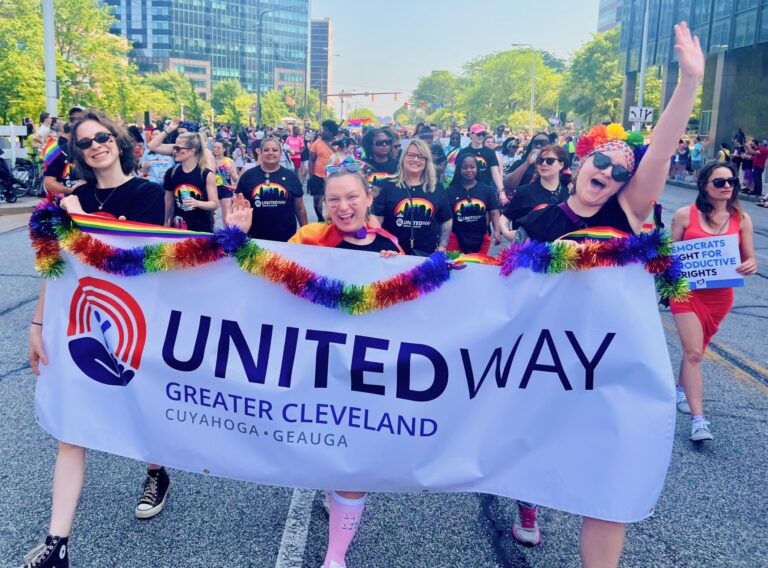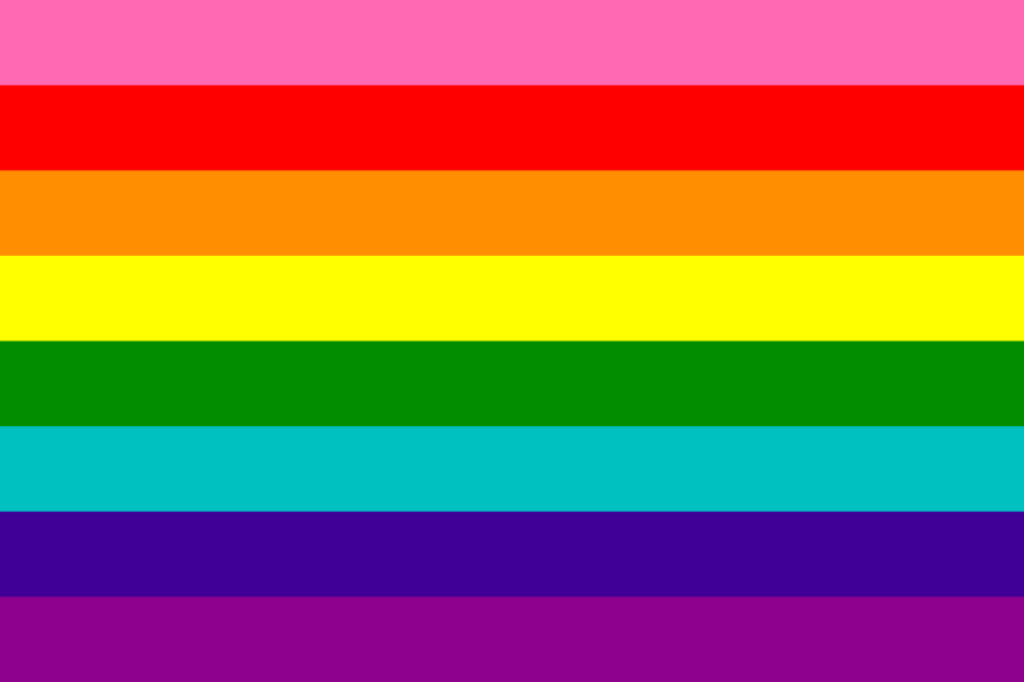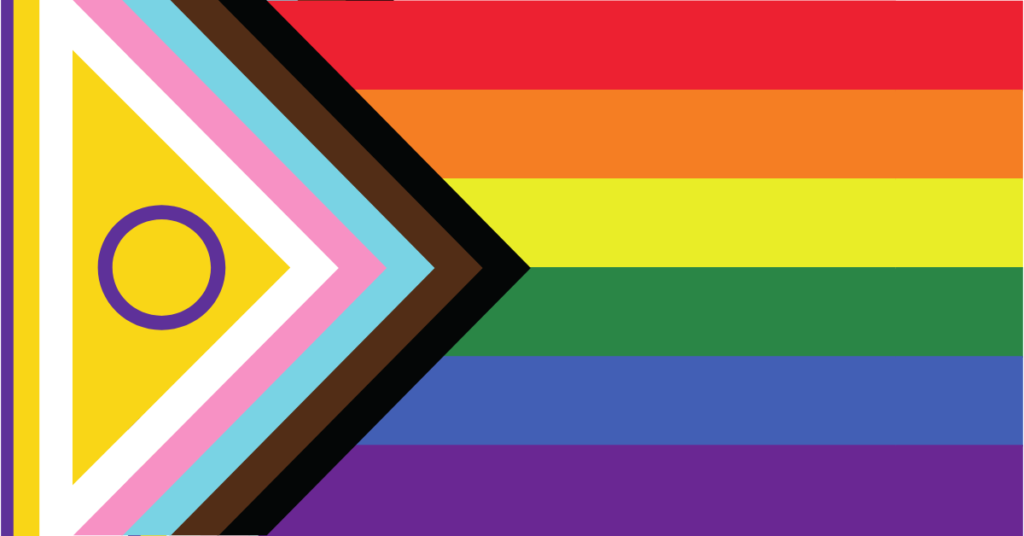Lizzie Bjork, Education and Advocacy Coordinator for the LGBT Community Center of Greater Cleveland, recently led an awareness training on lesbian, gay, bisexual, transgender, queer, intersex, asexual, and other (LGBTQIA+) experiences for the United Way of Greater Cleveland staff. Through activities and dialogue, Bjork led participants through complex concepts like implicit bias, heteronormativity, anti-LGBTQIA+ stigma, and how to be an ally.
Everyone came away with new knowledge, whatever their personal experiences. Participants reported learning new definitions for different identities and gaining greater awareness of the barriers and discrimination LGBTQIA+ people face in accessing services and healthcare.
“Today, I was reminded that not everyone is at the same level of knowledge and/or understanding of queer people and the queer community, and that’s okay,” said one participant. “We’re all learning and growing.”
Senior Director of Race, Diversity, Equity, and Inclusion Kimberly Chapmon-Wynne stresses that with equity work, everyone is still learning and growing. The goal isn’t to know everything, but to be open to different experiences and foster an awareness that not everyone experiences the same privileges.

Learning about privilege builds empathy
One activity that left an impact on participants centered around privilege. Employees were given a list of “privileges for sale” and an amount of money they could spend as a group to “buy” privileges. Groups had to discuss what to choose between privileges like “raising or having children without worrying about state intervention,” “sharing health insurance with your partner,” and “using public restrooms without fear of threat or punishment.”
Imagining you can only “buy” a few of these privileges increases awareness of the many ways people may experience privilege around sexual orientation and gender expression, even as they may simultaneously experience discrimination based on race, class, or other identities.
“I realized how intersectional these issues are, and how knowledge of LGBTQIA+ issues make us better at supporting all people,” reflected one staff member after the event.
And that’s exactly Chapmon-Wynne’s goal. “Openness and cognitive empathy will help us mitigate bias,” she explains, “and the more you practice them in relation to one group, the better you get at being open and empathetic to all experiences.”
“We want to raise the level of understanding, raise the level of acceptance, and, ultimately, raise the level of empathy we have for experiences that are different from our own,” she explains.
How this informs our work
While the primary goal of the training was to increase awareness and inclusivity within the workplace, staff are also thinking about how to extend the lessons to their external work. For example, the Community Resource Navigation Specialists who staff the 211 helpline will be doing more intensive training.
“Community Resource Navigation Specialists need to be trained to be culturally sensitive when taking calls because how a person identifies can’t be determined by the sound of their voice,” says Michelle Snowden, Associate Director of 211 Navigation Services. “Whenever we answer a 211 call, we want to use appropriate language to help reduce any harm from misgendering the caller.”
Another concern for 211 Navigators is directing callers to services that will be supportive of their identity.
“This is especially important with those in the LBGTQIA+ community experiencing homelessness, as we don’t want to send people to a shelter where they might not be safe,” Snowden says.
Although there is no local data available, a national study shows that non-heterosexual adults experience lifetime homelessness at more than double the rate of their heterosexual peers. The rates are significantly higher for non-heterosexual transgender and African American respondents.
Statistics like these stuck with staff members after the training.
“Even looking at very recent history we see massive progress in increasing the basic human rights of those in the LGBTQIA+ community,” reflected one participant. “However, a quick glance at the present shows not only how precarious those gains are but also how much more needs to be done.”
Bjork agrees. “It’s important to recognize the reality of the world we live in, and unfortunately there’s a lot of pretty rampant bias, especially against trans people,” she says. This bias has real implications for health, housing, financial, and social outcomes for LGBTQIA+ people.
Learning about these negative outcomes made staff members ask, what can we do? As individuals, Bjork suggests we can start by cultivating the attitude that LGBTQIA+ people are living as their authentic selves. Then, we can back that up with advocacy. Advocacy can be gently reminding a colleague when they are misgendering someone, calling your representative to speak out about anti-LGBT legislation, and many other small actions.
This training was just one step on a bigger journey for United Way, according to Chapmon-Wynne.
“We’re going to keep asking ourselves the question, how do we take our lived experiences and learn from each other,” she said, “and have these conversations, and elevate our own understandings and growth?”

Why does the Pride flag keep changing?
The original pride flag, created in 1978, featured a rainbow of colors from hot pink to violet. Each color symbolized a positive aspect of LGBTQ identity or experience, such as red for life, orange for healing, and violet for spirit.
The flag was later simplified to the familiar six-color rainbow design, partly because hot pink fabric was hard to find.
In 2019, the city of Philadelphia unveiled a new pride flag with added black and brown horizontal stripes. Commissioned after several race-related incidents in the city’s ‘gayborhood’, the flag was initially divisive within the LGBTQIA+ community.

The more recent “Intersex-Inclusive Progress Pride Flag” incorporates:
- Black/brown for People of Color
- White/blue/pink for Trans people
- Yellow/purple circle for Intersex people
Of course, all identities will never be represented in one design! Instead, this flag is a visual illustration of the complexity of identity, and the many varied groups that make up the LGBTQIA+ community.